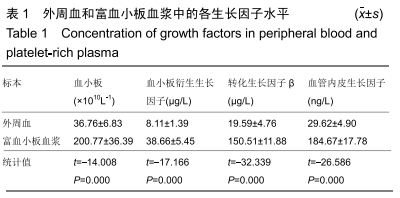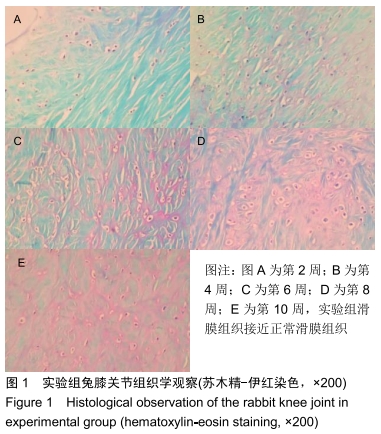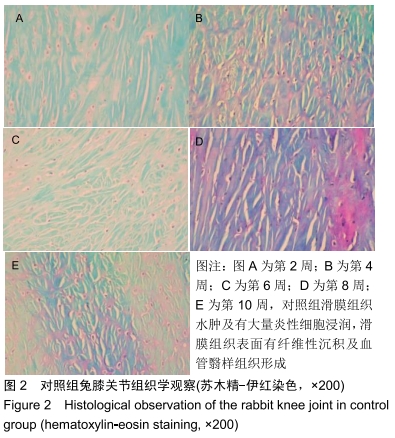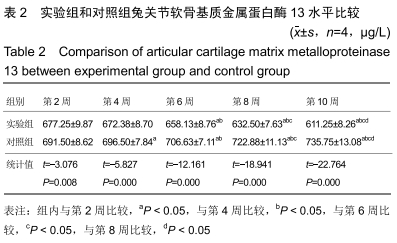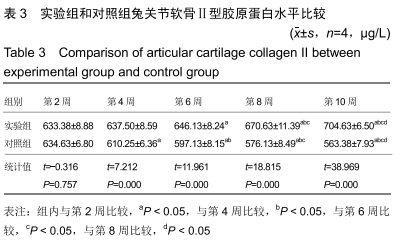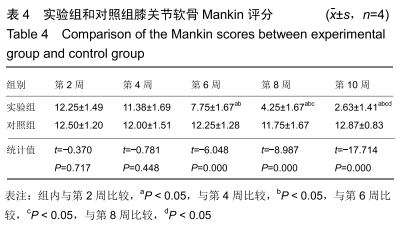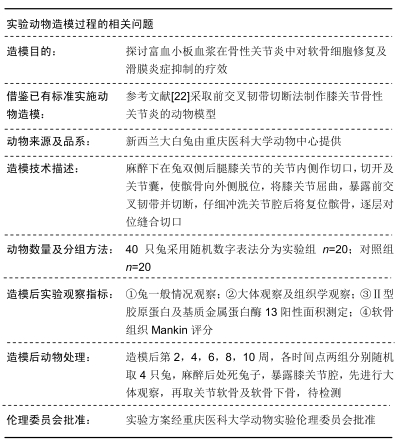[1] BERENBAUM F, GRIFFIN TM, LIU-BRYAN R. Review: Metabolic Regulation of Inflammation in Osteoarthritis. Arthritis Rheumatol.2017; 69(1): 9-21.
[2] MOURA MDEL G, LOPES LC, BIAVATTI MW, et al. Brazilian oral herbal medication for osteoarthritis: a systematic review protocol.Syst Rev.2016; 5:86.
[3] MALFAIT AM. Osteoarthritis year in review 2015: biology. Osteoarthritis Cartilage.2016;24(1): 21-26.
[4] NI GX. Development and Prevention of Running-Related Osteoarthritis.Curr Sports Med Rep.2016; 15(5): 342-349.
[5] STEADMAN JR, BRIGGS KK, POMEROY SM, et al. Current state of unloading braces for knee osteoarthritis. Knee Surg Sports Traumatol Arthrosc.2016; 24(1): 42-50.
[6] YUN S, KU SK, KWON YS. Adipose-derived mesenchymal stem cells and platelet-rich plasma synergistically ameliorate the surgical-induced osteoarthritis in Beagle dogs.J Orthop Surg Res.2016; 11(1): 9.
[7] ALSHAMI AM. Knee osteoarthritis related pain: a narrative review of diagnosis and treatment.Int J Health Sci (Qassim). 2014; 8(1): 85-104.
[8] YU P, HUNTER DJ. Intra-articular therapies for osteoarthritis. Expert Opin Pharmacother.2016; 17(15): 2057-2071.
[9] BENNELL KL, BUCHBINDER R, HINMAN RS. Physical therapies in the management of osteoarthritis: current state of the evidence.Curr Opin Rheumatol.2015; 27(3): 304-311.
[10] WENHAM CY, MCDERMOTT M, CONAGHAN PG. Biological therapies in osteoarthritis.Curr Pharm Des.2015; 21(17): 2206-2215.
[11] KALUNIAN KC. Current advances in therapies for osteoarthritis. Curr Opin Rheumatol.2016; 28(3): 246-250.
[12] ROMAN-BLAS JA, BIZZI E, LARGO R, et al.An update on the up and coming therapies to treat osteoarthritis, a multifaceted disease.Expert Opin Pharmacother.2016; 17(13):1745-1756.
[13] JEVSEVAR DS. Treatment of osteoarthritis of the knee: evidence-based guideline, 2nd edition. J Am Acad Orthop Surg. 2013; 21(9): 571-576.
[14] SANCHEZ M, ANITUA E, DELGADO D, et al.A new strategy to tackle severe knee osteoarthritis: Combination of intra-articular and intraosseous injections of Platelet Rich Plasma.Expert Opin Biol Ther.2016; 16(5): 627-643.
[15] JOHNSON CI, ARGYLE DJ, CLEMENTS DN. In vitro models for the study of osteoarthritis.Vet J.2016; 209:40-49.
[16] ORNETTI P, NOURISSAT G, BERENBAUM F, et al. Does platelet-rich plasma have a role in the treatment of osteoarthritis?.Joint Bone Spine.2016; 83(1): 31-36.
[17] FILARDO G, KON E, ROFFI A, et al. Platelet-rich plasma: why intra-articular? A systematic review of preclinical studies and clinical evidence on PRP for joint degeneration.Knee Surg Sports Traumatol Arthrosc.2015; 23(9): 2459-2474.
[18] LI FX, LI Y, QIAO CW, et al. Topical use of platelet-rich plasma can improve the clinical outcomes after total knee arthroplasty: A systematic review and meta-analysis of 1316 patients.Int J Surg.2017; 38:109-116.
[19] KENNEDY MI, WHITNEY K, EVANS T, et al. Platelet-Rich Plasma and Cartilage Repair[J]. Curr Rev Musculoskelet Med. 2018; 11(4): 573-582.
[20] ABD EL, RAOUF M, WANG X, et al.Injectable-platelet rich fibrin using the low speed centrifugation concept improves cartilage regeneration when compared to platelet-rich plasma. Platelets.2019; 30(2): 213-221.
[21] HOKUGO A, OZEKI M, KAWAKAMI O, et al. Augmented bone regeneration activity of platelet-rich plasma by biodegradable gelatin hydrogel.Tissue Eng.2005; 11(7-8): 1224-1233.
[22] STOOP R, BUMA P, VAN DER KRAAN PM, et al.Type II collagen degradation in articular cartilage fibrillation after anterior cruciate ligament transection in rats. Osteoarthritis Cartilage. 2001; 9(4): 308-315.
[23] MANKIN HJ, DORFMAN H, LIPPIELLO L, et al. Biochemical and metabolic abnormalities in articular cartilage from osteoarthritis human hips. II. Correlation of morphology with biochemical and metabolic data.J Bone Joint Surg (Am).1971; 53(3): 523-537.
[24] BENNELL KL, HUNTER DJ, PATERSON KL. Platelet-Rich Plasma for the Management of Hip and Knee Osteoarthritis. Curr Rheumatol Rep.2017; 19(5): 24.
[25] MARUYAMA M, SATAKE H, SUZUKI T, et al. Comparison of the Effects of Osteochondral Autograft Transplantation With Platelet-Rich Plasma or Platelet-Rich Fibrin on Osteochondral Defects in a Rabbit Model.Am J Sports Med.2017; 45(14): 3280-3288.
[26] LITTLE CB, BARAI A, BURKHARDT D, et al. Matrix metalloproteinase 13-deficient mice are resistant to osteoarthritic cartilage erosion but not chondrocyte hypertrophy or osteophyte development. Arthritis Rheum. 2009; 60(12): 3723-3733.
[27] THOMA DS, LIM HC, SAPATA VM, et al. Recombinant bone morphogenetic protein-2 and platelet-derived growth factor-BB for localized bone regeneration. Histologic and radiographic outcomes of a rabbit study.Clin Oral Implants Res.2017; 28(11): e236-e243.
[28] DEPRES-TREMBLAY G, CHEVRIER A, TRAN-KHANH N, et al. Chitosan inhibits platelet-mediated clot retraction, increases platelet-derived growth factor release, and increases residence time and bioactivity of platelet-rich plasma in vivo.Biomed Mater.2017; 13(1): 015005.
[29] SARBAN S, TABUR H, BABA ZF, et al. The positive impact of platelet-derived growth factor on the repair of full-thickness defects of articular cartilage.Eklem Hastalik Cerrahisi.2019; 30(2): 91-96.
[30] COSTA ELD,TEIXEIRA LEM,PADUA BJ,et al.Biomechanical study of the effect of platelet rich plasma on the treatment of medial collateral ligament lesion in rabbits.Acta Cir Bras.2017; 32(10): 827-835.
[31] SPREAFICO A, CHELLINI F, FREDIANI B, et al. Biochemical investigation of the effects of human platelet releasates on human articular chondrocytes.J Cell Biochem.2009; 108(5): 1153-1165.
[32] PETTERSSON S, WETTERO J, TENGVALL P, et al. Human articular chondrocytes on macroporous gelatin microcarriers form structurally stable constructs with blood-derived biological glues in vitro. J Tissue Eng Regen Med.2009; 3(6): 450-460.
[33] ANGOORANI H, MAZAHERINEZHAD A, MARJOMAKI O, et al.Treatment of knee osteoarthritis with platelet-rich plasma in comparison with transcutaneous electrical nerve stimulation plus exercise: a randomized clinical trial.Med J Islam Repub Iran.2015; 29:223.
[34] MEHEUX CJ, MCCULLOCH PC, LINTNER DM, et al. Efficacy of Intra-articular Platelet-Rich Plasma Injections in Knee Osteoarthritis: A Systematic Review.Arthroscopy.2016; 32(3): 495-505.
|

